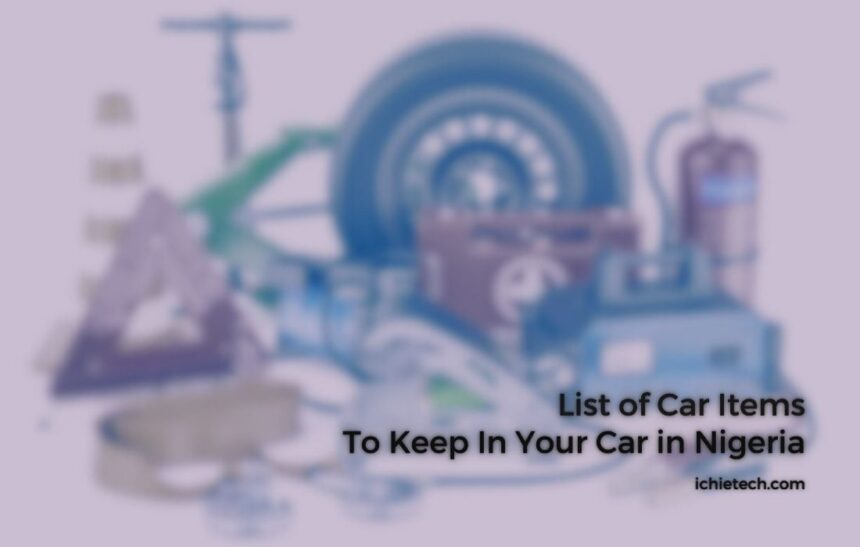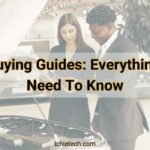Car ownership in Nigeria has been on the rise in recent years, particularly among the country’s growing middle class. Owning a car is seen as a status symbol and a measure of success in Nigerian society, and many people still aspire to buy their own vehicles. However, car ownership also comes with its own set of challenges in Nigeria.
Therefore, it is crucial to have an emergency kit in your car that includes basic items like a first aid kit, a flashlight, a multipurpose tool, and a fire extinguisher. It’s also recommended to carry extra water and non-perishable food in case of an extended stay on the road. Furthermore, keeping a spare phone charger and a portable power bank in your car is also advisable.
Being prepared can make a significant difference in an emergency situation, and having these essential items in your car can ensure your safety and comfort until help arrives. Regular maintenance and professional inspection of your car are also essential to minimize the risk of breakdowns or accidents while driving.
Despite the challenging conditions of poor road infrastructure, high fuel prices, frequent traffic congestion, and the likelihood of being stopped by traffic officers, many Nigerians still aspire to own a car. Furthermore, the country’s automotive industry is growing despite the economic difficulties that make maintaining a car expensive for many Nigerians.
Top 12 Items All Nigerians Should Have In Their Car
| Item | |
| 1 | Car Documents |
| 2 | Warning Triangles (C-caution) |
| 3 | Fire Extinguisher |
| 4 | Jack |
| 5 | Spare Tyre |
| 6 | First Aid Kit |
| 7 | Wheel Spanner |
| 8 | Tow Rope |
| 9 | Umbrella |
| 10 | Jumper Cables |
| 11 | Hydraulic and Transmission Fluid |
| 12 | Flashlights |
In Nigeria, there are certain items that are legally required to be carried in every vehicle at all times. By carrying these items, drivers can ensure compliance with the law and be better prepared for emergencies on the road.
Having the first to the seventh item is compulsory
1. Car Documents

Car owners in Nigeria must carry several documents while driving to prove that they legally own and registered the car. These documents include a valid driver’s license, proof of ownership (either the car registration certificate or a vehicle license), third-party insurance, a roadworthiness certificate, and a valid tax clearance certificate. The Federal Road Safety Corps (FRSC) issues a driver’s license, which must be renewed every three years.
The Nigerian Vehicle Inspection Service (NVIS) issues proof of ownership and a vehicle license, which must be renewed annually. Car owners must also have mandatory third-party insurance, which must be renewed annually. The FRSC issues the roadworthiness certificate, which must be renewed annually. Finally, the Federal Inland Revenue Service (FIRS) issues the tax clearance certificate, which must be renewed annually. Car owners should ensure they have all the necessary documents while driving to avoid legal penalties.
2. Warning Triangles (C-caution)
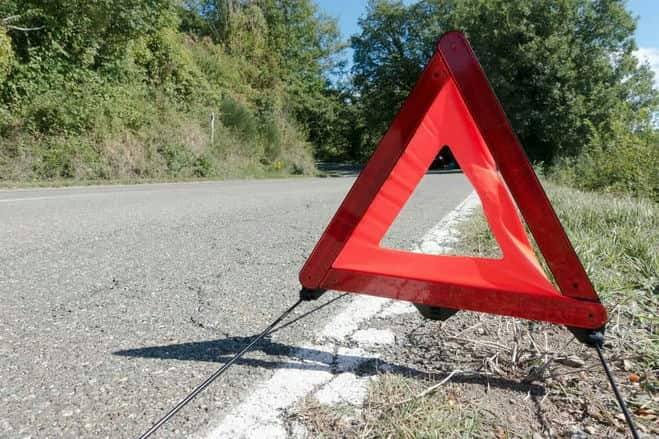
Warning triangles, also known as C-caution triangles, are critical devices for road safety used to alert other drivers of a stopped or stalled vehicle on the road. These reflective, triangular-shaped devices are usually placed on the road surface behind a disabled vehicle to warn other drivers of the potential hazard ahead.
Ensuring the safety of drivers and passengers is paramount, and warning triangles play a significant role in preventing accidents. It is required by law to carry a warning triangle in your vehicle at all times.
To use a warning triangle safely, it is essential to carefully follow the manufacturer’s instructions and place the triangle at a safe distance behind the vehicle in a visible location for oncoming traffic. It is also vital to turn on the vehicle’s hazard lights to further alert other drivers of the potential danger ahead.
3. Fire Extinguisher
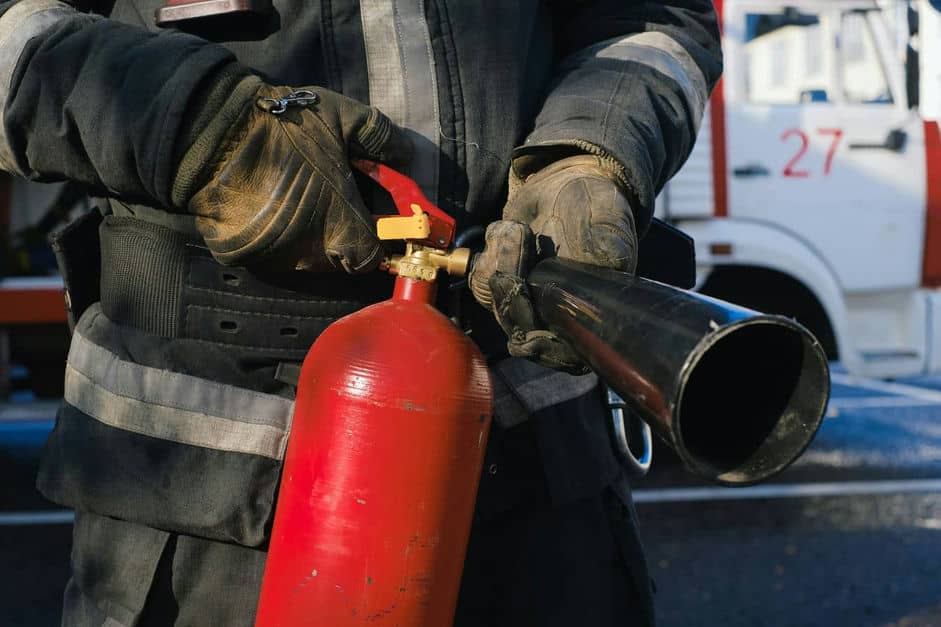
Having a fire extinguisher in a car is a good safety practice, as it can help you quickly put out a fire and prevent it from spreading. Car fires can happen due to a variety of reasons, such as engine overheating, fuel leaks, electrical malfunctions, or accidents.
When choosing a fire extinguisher for your car, make sure to select one that is rated for use on Class B (flammable liquids) and Class C (electrical) fires. These types of extinguishers are typically labelled as “BC” or “ABC”.
Avoid using extinguishers labelled “A” only, which are designed for fires involving ordinary combustibles like wood or paper. Every vehicle is expected to carry the required number of units and sizes, below is a table of vehicle types and their required number of units and sizes.
| VEHICLES | NO./REQUIRED | SIZE |
| ARTICULATED | 2 UNITS | 9 KG |
| LORRIES | 2 UNITS | 6 KG |
| LUXURY BUSES | 2 UNITS | 6 KG |
| MEDIUM BUSES | 1 UNIT | 2 KG |
| LIGHT GOODS VANS | 1 UNIT | 1 KG |
| TAXIS | 1 UNIT | 1 KG |
| CARS | 1 UNIT | 1 KG |
It’s also important to keep your fire extinguisher in a secure location in your car where it won’t become a hazard during a collision or sudden stop. The best place to keep it is in the trunk or a secured storage compartment.
4. Jack

Performing maintenance tasks, such as changing a tyre, on your vehicle requires a vital tool known as a car jack. To ensure safety while using a jack on your car, it is important to choose one that can support the weight of your vehicle. Usually, most cars come with a scissor jack that fits in a specific location under the car, often near one of the wheels.
However, you must refer to the owner’s manual to identify the designated jack points, which are the safest and most stable locations to lift the car.
To avoid any rolling, it is crucial to park your car on a flat surface and engage the parking brake before using a jack. Also, place a chock or wedge behind the opposite wheel to prevent the car from moving while lifted. It is necessary to use caution when working with a jack and never crawl under a car that is only supported by a jack.
For additional support and stability, while working on your vehicle, it is highly recommended to use jack stands. In summary, using a car jack is a useful tool, but it is essential to use it safely and follow proper procedures to avoid accidents or damage to your vehicle.
5. Spare Tyre
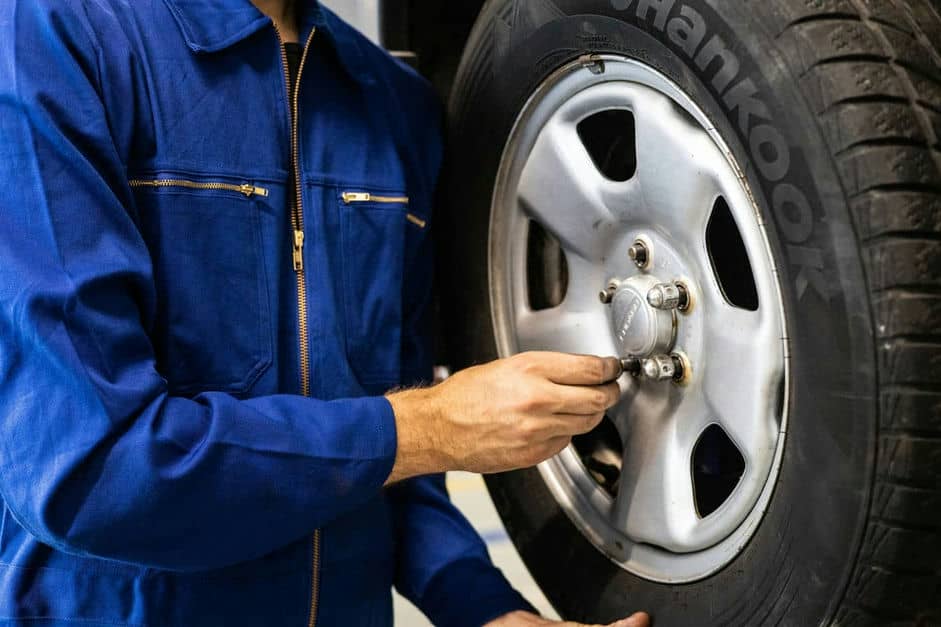
A spare tyre, which is also known as a “doughnut” or “space-saver” tyre, is a smaller and temporary tyre that can be used to replace a flat or damaged tyre. Standard equipment in most cars includes a spare tyre, jack, and lug wrench. Once you experience a flat tyre, the spare tyre can be used as a temporary solution to help you get to a safe location for repairing or replacing the damaged tyre.
Despite the convenience of a spare tyre, it is crucial to understand that it is not designed for long-term use, and it typically has a limited speed and distance rating. Additionally, it is important to regularly inspect the condition and air pressure of your spare tyre, as it may lose air over time and become damaged from exposure to heat and weather.
If your car does not come with a spare tyre, it is essential to consider getting one since it is legally required to have one in your car. In summary, the spare tyre can be a lifesaver in a pinch, but it is crucial to use it only as a temporary solution and to keep it well-maintained to ensure its effectiveness when needed.
6. First Aid Kit

A basic first aid kit should include items such as adhesive bandages, gauze, antiseptic wipes, scissors, tweezers, and disposable gloves. It is also recommended to include items such as a CPR face shield, a tourniquet, and a first aid manual. When storing your first aid kit in your car, make sure it is easily accessible and kept in a cool, dry place. Regularly check the contents of your first aid kit to ensure all items are up to date and in good condition.
Having a first aid kit in your car is an important safety practice, as it can help you quickly respond to minor injuries and potentially save lives in emergency situations. When selecting a first aid kit for your car, make sure to choose one that is appropriate for the size of your vehicle and the number of passengers you typically carry. A basic first aid kit should include items such as;
- Pair of scissors
- Safety pins
- Lodine
- Cotton wool
- Handkerchiefs
- Plasters
- Splints
- Bandage
- Disposable gloves
- Razor blades
- Adhesive tapes
- Aspirin/paracetamol
- Anti-bacteria soaps
- Antiseptic
- Facial mask
7. Wheel Spanner
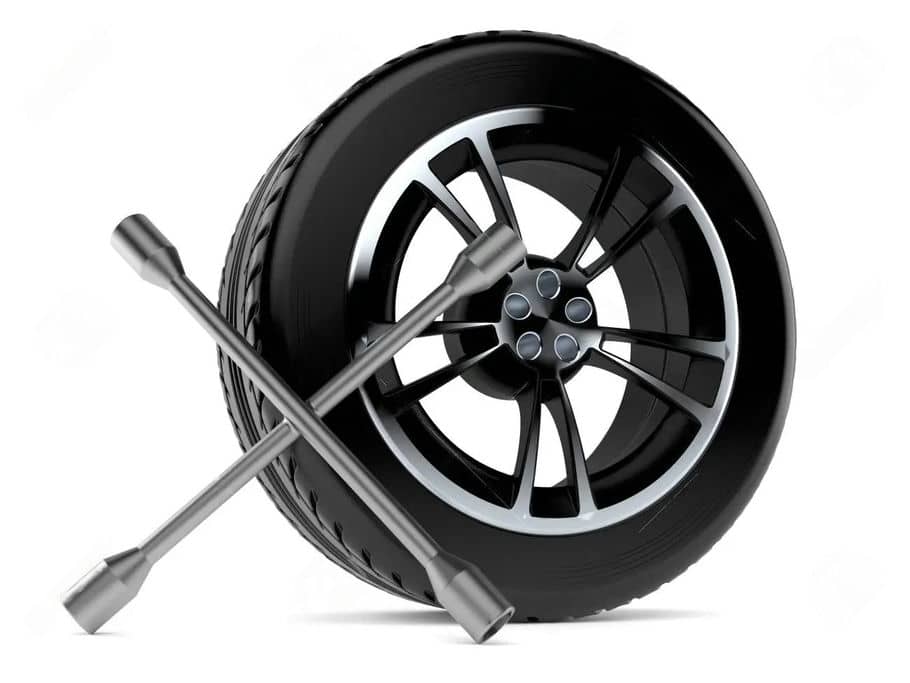
A wheel spanner, also known as a lug wrench, is a tool used to loosen and tighten lug nuts on car wheels. Lug nuts are the fasteners that hold the wheel to the car’s hub, and they need to be tightened securely to ensure the safe and reliable operation of the vehicle.
The most common type of wheel spanner is a cross-shaped tool with different sizes of sockets on each end to fit different size lug nuts. Some cars may also use a socket wrench or torque wrench to tighten lug nuts. Most cars come with a wheel spanner that is designed to fit the lug nuts on the wheels.
It’s important to make sure that lug nuts are tightened to the proper torque specification to prevent the wheel from coming loose while driving. Over-tightening or under-tightening the lug nuts can lead to problems such as wheel wobbling, uneven tire wear, or even the wheel coming off the car.
Also read:
Top 10 Cars Recommended for Nigerian Roads
8. Tow Rope
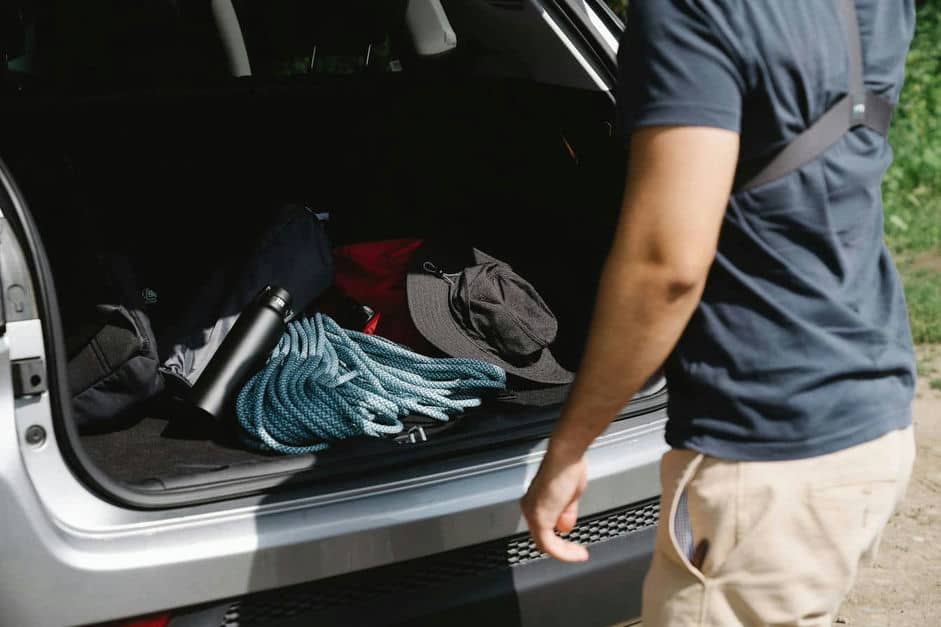
A long and strong rope used to pull or tow a vehicle or another object is called a tow rope. Tow ropes find common usage when a vehicle breaks down or gets stuck and needs to be moved. Usually, the rope is attached to both the broken-down vehicle and a functioning vehicle capable of pulling the weight.
When using a tow rope, there are several important considerations to keep in mind. Firstly, it is crucial to ensure that the rope is strong enough to handle the weight of the vehicle being towed. Additionally, it should be securely attached to both vehicles, so as to prevent any accidents or damage from occurring.
Furthermore, drivers must remain mindful of the potential hazards associated with towing. Sudden movements or shifts in weight can cause the towed vehicle to collide with the towing vehicle, leading to potentially serious consequences. As such, it is important to drive carefully and attentively when towing, keeping a close eye on the road ahead and anticipating any potential obstacles or challenges that may arise.
9. Umbrella

Yes, that’s a great addition! It’s always a good idea to keep an umbrella in your car, especially during the rainy season or in areas with unpredictable weather. This can help you stay dry and comfortable while attending to your car, and can also come in handy during unexpected weather changes.
10. Jumper Cables
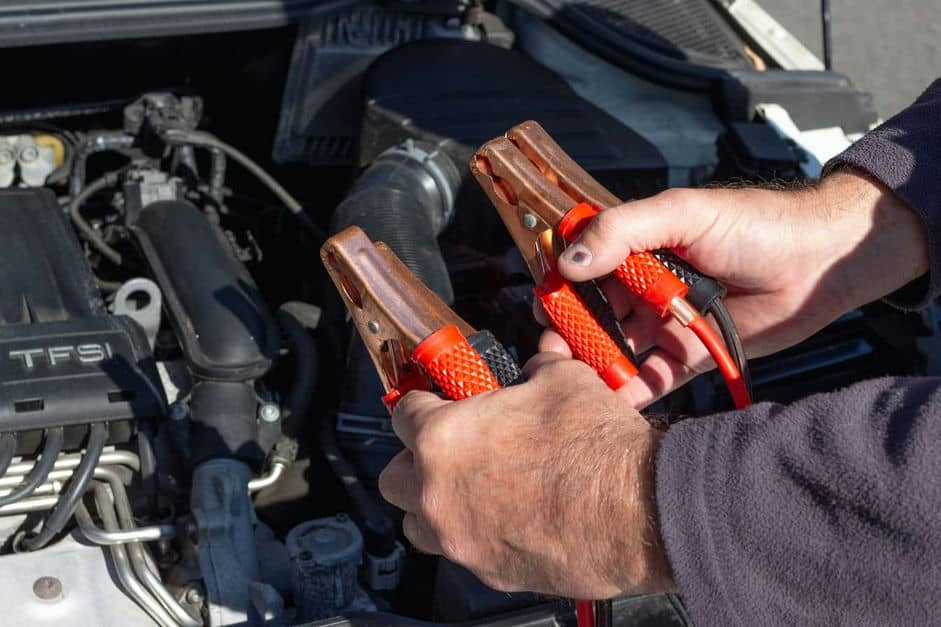
Jumper cables are an essential item for any driver to have in their car in case of a dead battery. They are also commonly known as booster cables and are made up of two insulated wires that have alligator clips on each end. The purpose of jumper cables is to transfer power from a working car’s battery to a dead car’s battery, allowing the dead car to start. It’s important to use caution when handling jumper cables and to follow the proper steps to avoid injury or damage to the vehicles.
11. Hydraulic and Transmission Fluid
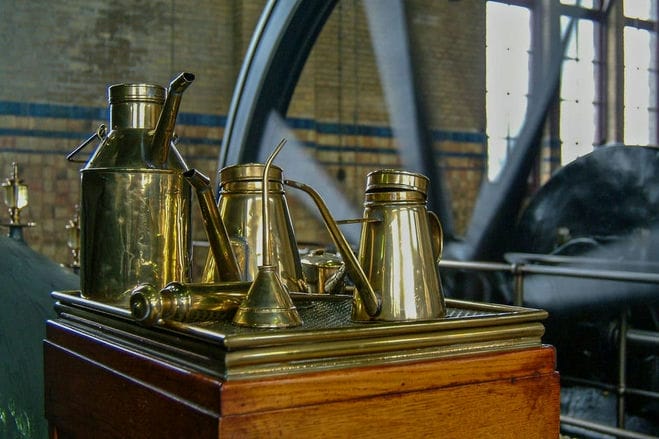
Hydraulic systems are widely used in cars for several purposes, including braking systems and power steering systems. It is advisable to keep extra hydraulic components on hand in case of an emergency since these systems are critical for the safe and efficient operation of a vehicle.
In addition to hydraulic systems, another essential component of a car’s operation is transmission fluid. This type of oil is used to lubricate and cool the moving parts within a car’s transmission system.
The transmission system is responsible for transferring power from the engine to the wheels, and it contains various gears, clutches, and other mechanical components that must move smoothly and efficiently for the system to function properly. Therefore, it is crucial to always have spare transmission fluid available in case of a need.
12. Flashlights

You may need to inspect your car in low-light conditions. A flashlight can come in handy in such situations.
Conclusion
In conclusion, keeping essential car items in your car can make you better prepared for emergencies and improve your driving experience in Nigeria by ensuring safety and comfort. By following the tips and advice shared in this article, you can increase your chances of staying safe and minimising the impact of unforeseen events on the road.




